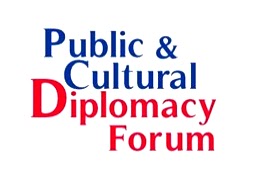
Gastrodiplomacy – “Reaching Hearts and Minds through Stomachs”
Yesterday, I attended an event at American University discussing the merits of “gastrodiplomacy”—a term basically meaning the public diplomacy of food. The event was hosted by the School of International Service’s Public and Cultural Diplomacy Forum.
Gastrodiplomacy, as coined by Paul Rockower, is a public diplomacy tool which he describes as a method of reaching hearts and minds through people’s stomachs. He further explained that the use of food can be a key element of a nation branding strategy, and a method that holds great promise for “middle powers” seeking to increase their international influence through the promotion of their culture. Quoting Frederick Kaufman, as “the history of the world is a history of hungry people,” Rockower argued that food can be identified as a basic element of commonality.
 While the use of food as a diplomatic tool may seem ridiculous or silly to some, it is certainly not without its merits. As Sam Chapple-Sokol explained, the use of food in diplomatic settings has always been a crucially important form of non-verbal communication. Culinary diplomacy, defined by Chapple-Sokol as the use of food on a government-to -government level, has a number of facets. From how people are seated at a table, to the food presented or the venue chosen, the use of food in diplomacy, Chapple-Sokol argued, is a tradition with a great deal of precedent and thousands of years of history behind it.
While the use of food as a diplomatic tool may seem ridiculous or silly to some, it is certainly not without its merits. As Sam Chapple-Sokol explained, the use of food in diplomatic settings has always been a crucially important form of non-verbal communication. Culinary diplomacy, defined by Chapple-Sokol as the use of food on a government-to -government level, has a number of facets. From how people are seated at a table, to the food presented or the venue chosen, the use of food in diplomacy, Chapple-Sokol argued, is a tradition with a great deal of precedent and thousands of years of history behind it.
Of the countries represented on the panel, South Korea, Peru and Spain—Peru seemed to have the most specific goals in its growing promotion of Peruvian food.
Specifically, Peru sees the use of gastrodiplomacy as a method for attracting tourism. From the Embassy of Peru, Luis Chang Boldrini noted that for every 7 tourists that visit Peru, 1 permanent job is created. Boldrini also contended that on the international market, countries are competing for tourists and investors, and gastrodiplomacy is a tool for building a strong country brand and gaining competitive advantage. Furthermore, he explained that Peru is seeking to expand its tourism market beyond Incan ruins and rainforests, and that this is starting to happen in correlation with the international rise in popularity of Peruvian food.
Representing the Embassy of the Republic of Korea (South Korea), Kyeong-kyu Kim compared the rise in popularity of Korean cuisine to that of K-pop. He argued that food is a strong element of culture in South Korea, and is seen as a point of pride and something that can be “shown off” to the world. Furthermore, he stipulated that food and culture can be used to create momentum for achieving South Korea’s national or international goals. As such, South Korea has several strategies for increasing the spread of “K-food,” including increasing food infrastructure, food development, promoting positive health correlations, matching funds, and marketing techniques.
As for Spain, gastrodiplomacy appeared more nebulous with less of a specific purpose. Referencing the history of Spain, the Spanish Embassy’s Guillermo Corral explained that modern Spanish cuisine development reflects the transition to democracy experienced in that country. He also made note of the perceived health benefits of Spanish food by connecting it to Spain’s relatively high life expectancy. But I did not get a great sense from his presentation that Spain was attempting to connect particular policy or economic goals to food, but rather that food is being seen in the country as less of an economic product and more of a cultural element.
The end of the discussion involved a needed debate about how the success of gastrodiplomacy can be measured. If countries are to pursue this type of public diplomacy, there must be a goal behind it. A conversation about gastrodiplomacy and its relation to soft and hard power, and whether or not it could be used as a tool of conflict resolution dominated part of the Q&A session. It was agreed that the effects of gastrodiplomacy can be very difficult to measure, but that there are a few techniques, from critic reviews to sales to surveys about “positive feelings” about the country of origin that all contribute to developing a system of metrics. Influence, however, can be very difficult to measure.
My conclusion is that like much of public diplomacy, gastrodiplomacy is not a be-all end-all tool—and few doing research on the subject would contend that it is. Rather, it must be coupled with other tools in addition to sound policy in order to be effective. While gastrodiplomacy can help to literally get people “to the table,” on its own it is unlikely to be entirely persuasive. If you’re a country like Peru, gastrodiplomacy is a specialty tool used to accomplish very specific goals such as increasing tourism. But while delicious food is unlikely to be an effective problem solving instrument, gastrodiplomacy can help to find commonality, open conversation, and serve as a starting point from which other tools of influence can be put into play.







[…] Gastrodiplomacy—“Reaching Hearts and Minds Through Stomachs” […]
[…] Gastrodiplomacy – “Reaching Hearts and Minds through Stomachs” […]
[…] Gastrodiplomacy – “Reaching Hearts and Minds Through Stomachs” […]
Great post! Thanks for academic validation for the Fusion Food Campaign! We reposted this and added the fusion dish to the mix! Matthew Wallin, what’s your twitter handle? Would like to follow you. Thanks again!